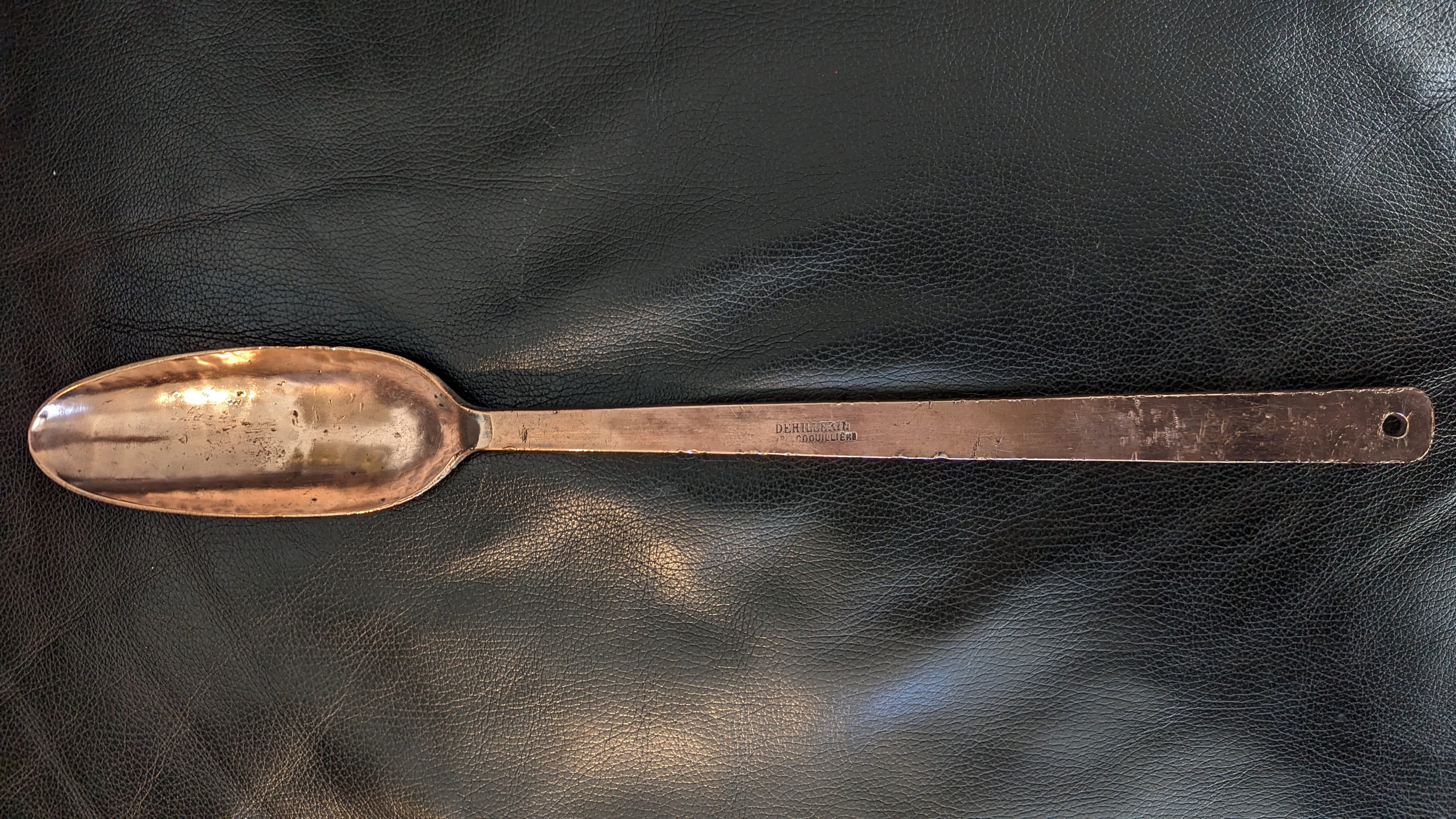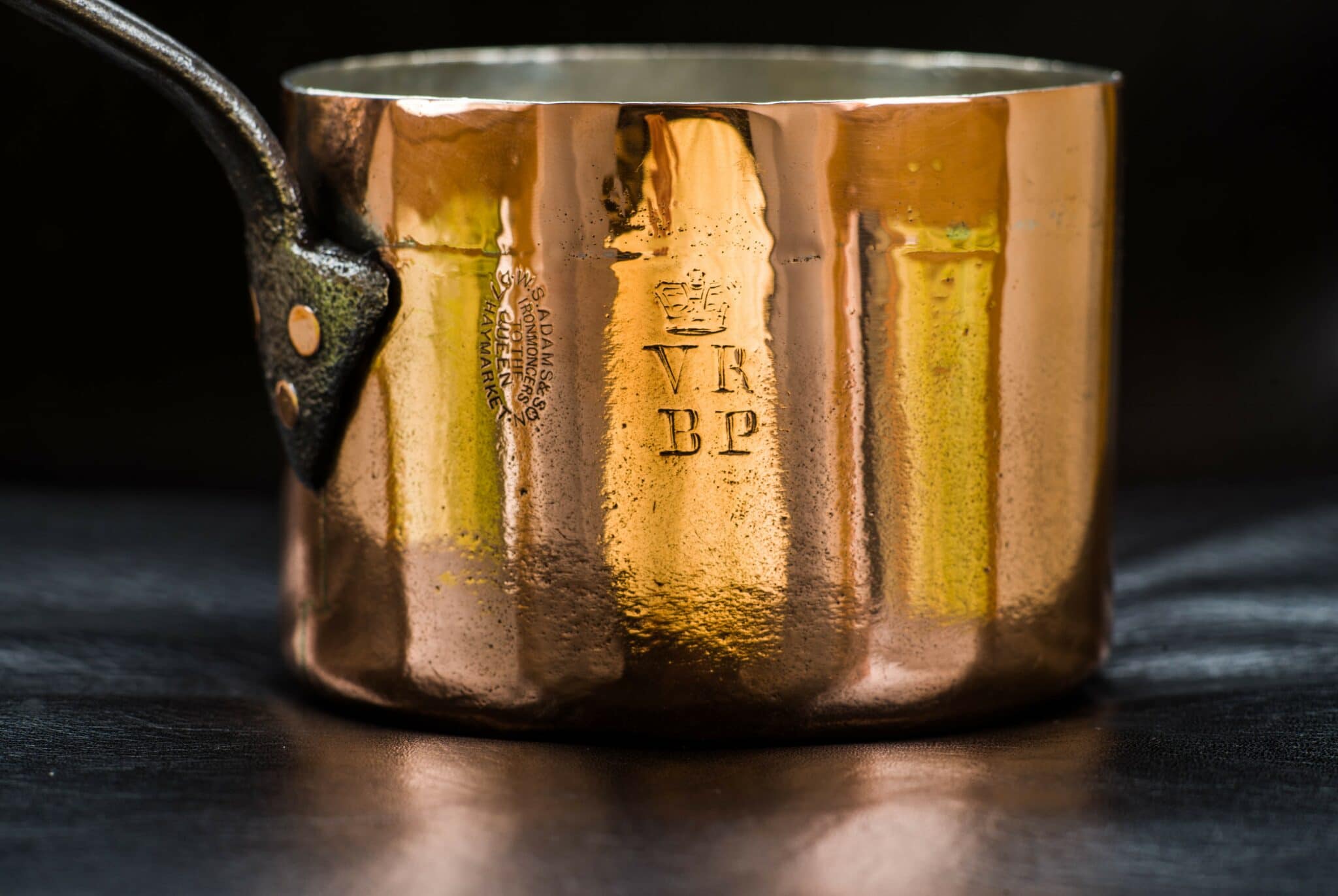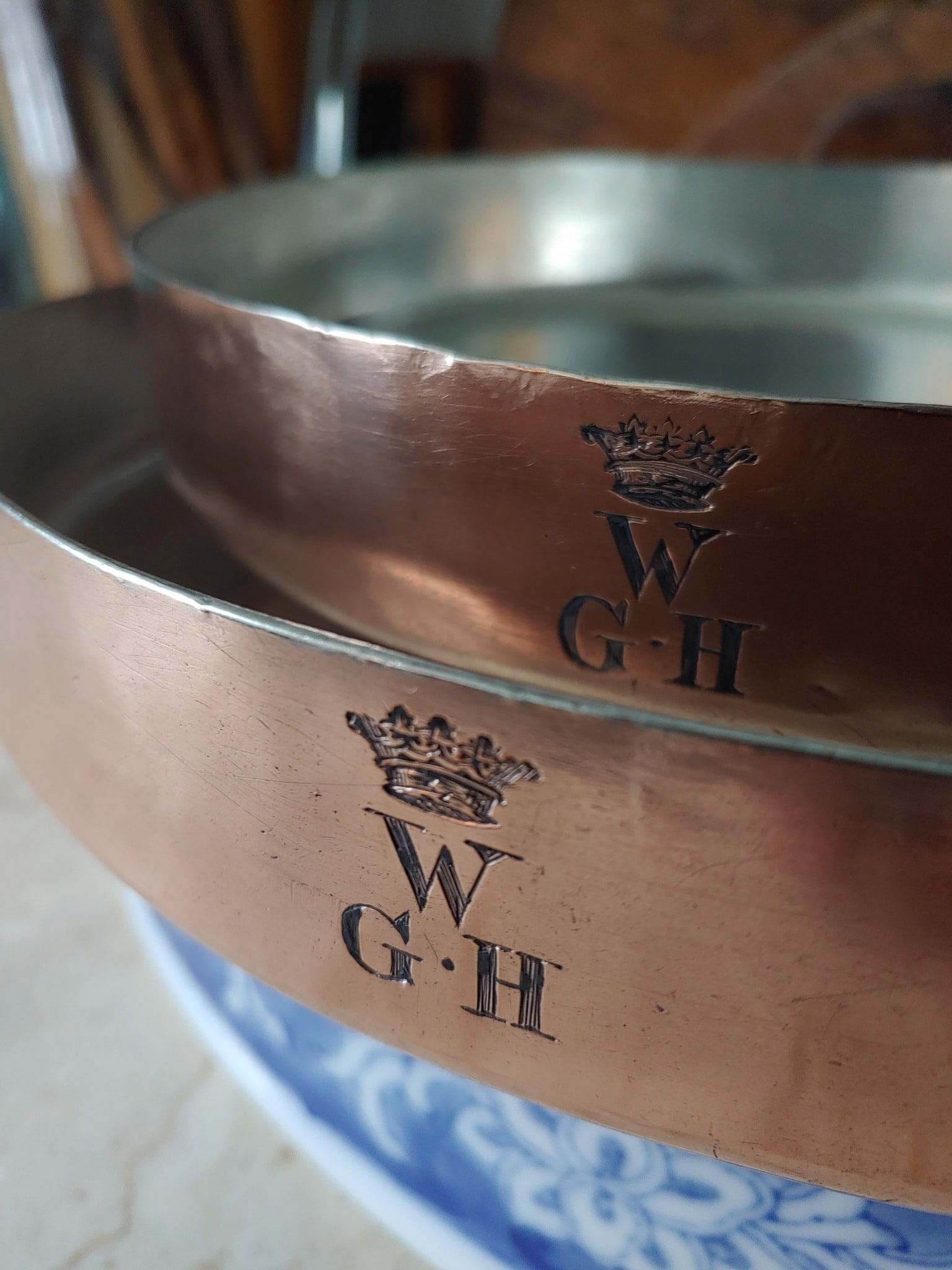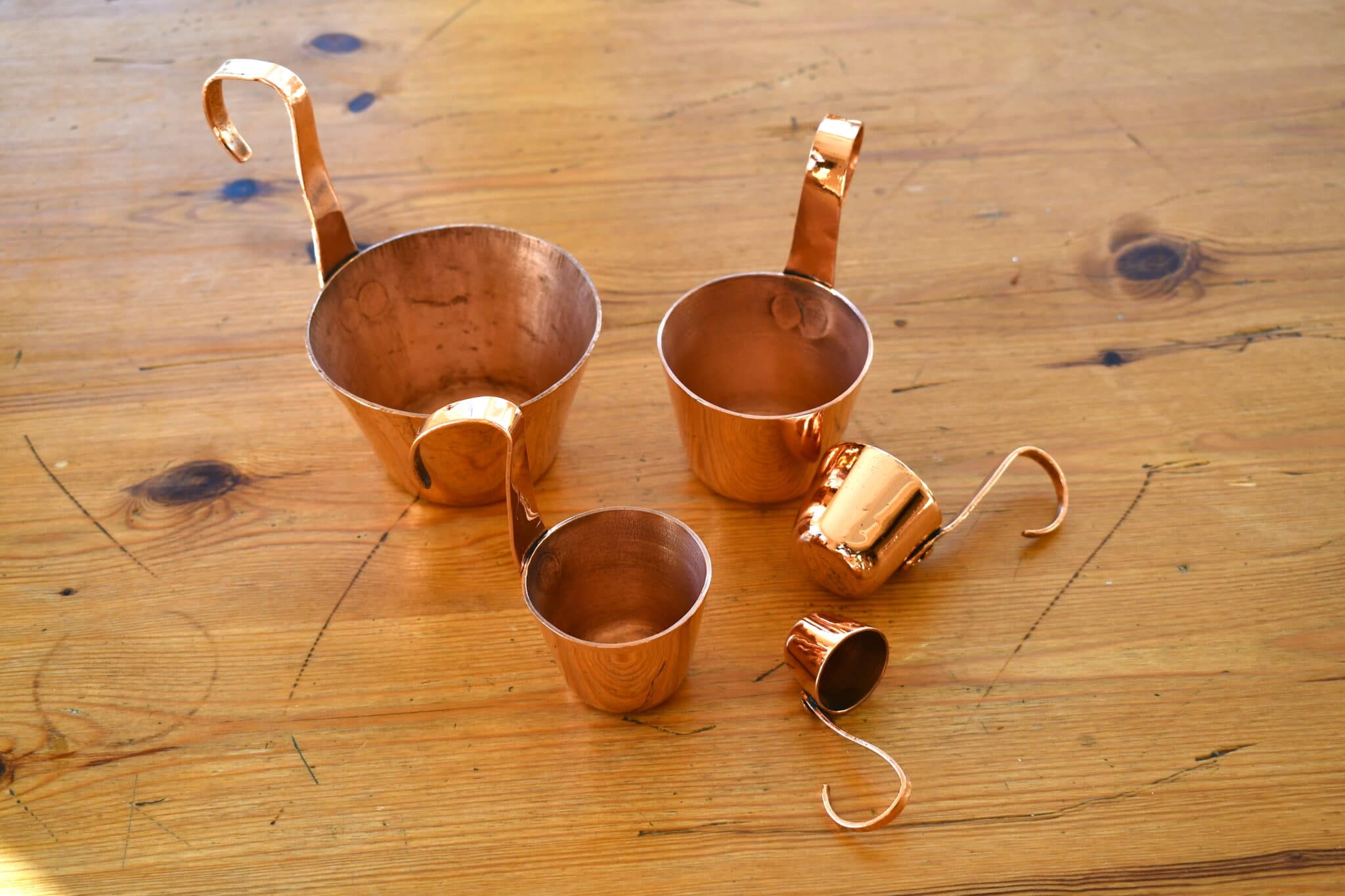When life hands you a dead duck, make canard à la rouennaise.
Part 1: Ruthless pragmatism
According to Amy Finley in her book “How to Eat a Small Country,” long ago a little girl in the Rouen region of Normandy was taking a basketful of ducks to the market. Upon arriving, she discovered that one of the ducks had suffocated. She trudged home with the worthless body, presented it to her mother, and burst into tears.
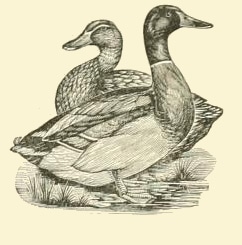 Imagine yourself as this practical French housewife of the 18th century, confronted with your weeping child and a limp dead duck. Surely, perhaps you might have told yourself, there was something that could be done. Death by suffocation prevents exsanguination, retaining more of the flavor and essence of duck — surely, this sad end could be turned into an advantage. Surely, though the blood and organs had been left to wallow for some time in their mysterious humors, though the dark hand of decay had no doubt laid its first light questing touch upon the still body, surely there had to be a way to bring this duck’s glorious flavors forth to the table in fulfillment of that Divine Will which had set it on this earth for this purpose.
Imagine yourself as this practical French housewife of the 18th century, confronted with your weeping child and a limp dead duck. Surely, perhaps you might have told yourself, there was something that could be done. Death by suffocation prevents exsanguination, retaining more of the flavor and essence of duck — surely, this sad end could be turned into an advantage. Surely, though the blood and organs had been left to wallow for some time in their mysterious humors, though the dark hand of decay had no doubt laid its first light questing touch upon the still body, surely there had to be a way to bring this duck’s glorious flavors forth to the table in fulfillment of that Divine Will which had set it on this earth for this purpose.
And so she drew upon the ruthless pragmatism that undergirds French cuisine and cooked it anyway. She roasted the duck’s breast and legs and took the duck’s liver and puréed it. Then she took the duck’s raw body, squeezed out as much blood as she could, and whisked the blood into a sauce with the liver and a little wine and onions. And boy howdy was it good. Says Amy, “[T]he duck had a delicious, rich, gamey taste, almost like wild duck, because during its last moments of probable panic, as its life was being snuffed away, its heart beat very quickly, rushing blood deep into every last fiber of its muscles and infusing it with flavor.”
This is the (perhaps apocryphal) origin of canard à la rouennaise, one of the richest and most flavorful dishes in French cuisine. It’s also the story of how one French housewife’s unflinching determination to make the best of the ingredients before her turned an unfortunate accident into a triumph. This quality — ruthless pragmatism — seems to me to be a guiding principle for French cooking, not simply as a matter of economy but because the French believe that pretty much every part of the animal has a flavor or texture to contribute to a meal. Your task — nay, duty — is to roll up your sleeves, get out your knife or your cleaver or your tenderizer or your specially-designed brain scooper or whatever and get at it. So what if the duck has been dead for a while? Are you just going to let it go to waste? Non!

By the middle of the 19th century, the rustic canard à la rouennaise had evolved into the more refined canard à la presse. (Made with duckling, canard becomes caneton; in English, the dish may be rendered simply as “pressed duck.”) Rather than wringing the duck’s body by hand to squeeze out its blood, one could employ a meat press, a simple hand-cranked kitchen tool to compress meat to get the blood out. But the true innovation of canard à la presse was the involvement of a duck press, an upgraded press made of shiny brass, silver plate, or even solid silver and therefore of sufficient beauty and grandeur to be brought to the table to perform the pressing before delighted observers.
Canard à la presse is not simply a delicious dish but a ritual performance. The duck — preferably from Rouen, of that breed known for it particularly rich flavor — is not butchered but instead strangled so that none of its blood is spilled. After a light roast of no more than 20 minutes, enough to brown the skin and breast meat while leaving the interior raw, a specially-trained canardière brings both duck and press to the table. The canardière slices the breast meat into aiguillettes, slender “needles,” and arranges them on a platter. (In some versions of the dish, the duck’s thigh meat is also detached, grilled separately, and served with salad as an accompaniment. The sauce can also vary, though for a traditional rouennaise the duck’s liver is pureed with wine and onions to serve as the base for the sauce.)
 Then the canardière cuts the duck’s raw body with its bones and organs into pieces and inserts them the canister of the press. The wheel is turned, the piston inches downward into the canister, and the diners watch in fascination as the duck’s blood emerges from the spout of the press. The canardière adds this precious essence to the sauce base, dribbles the completed sauce over the aiguillettes of tender breast meat, and serves the dish to the delighted patrons.
Then the canardière cuts the duck’s raw body with its bones and organs into pieces and inserts them the canister of the press. The wheel is turned, the piston inches downward into the canister, and the diners watch in fascination as the duck’s blood emerges from the spout of the press. The canardière adds this precious essence to the sauce base, dribbles the completed sauce over the aiguillettes of tender breast meat, and serves the dish to the delighted patrons.
I have never tried canard à la presse but it is considered perhaps the most extravagant and luscious dish in French cuisine with an honored place in the country’s patrimonie — its sacred culture. In 1867, canetons à la rouennaise were the eleventh of sixteen courses served at the fabulous dîner des trois empereurs at which King William I of Prussia, Tsar Alexander I of Russia, and Prince Otto von Bismarck of Germany enjoyed an absolutely-no-expense-spared meal at Café Anglais, the best restaurant in Paris (and by extension, the world).
Descriptions of the experience of this dish abound but in my opinion none of them comes close to this account from 1898 in the newspaper Le Parisien, in which friends enjoy an evening of philosophical discussion and fin-du-siècle reflection enriched by canard à la presse:
The aiguillettes were lined up in the silver dish. The richness of their episcopal purple gradually faded to a delicate and definitive pink because they continued to cook. The thighs, detached, disappeared, to some mysterious fate. The fat morsels set aside would not be put into the press where the carcass and bones were already cracking, because an excess of oil would weigh down the tasty essence that flowed forth, whose Master, in a sprightly rhythm — almost inspired — sprinkled upon the delectable flesh…
The duck was ready. Rich essence of life, concentration of rare and vigorous scents, it melted in us in an almost spiritual ecstasy, and mouth and nose knew in their dark consciousness the thrill of a glimpse of the absolute. Growing more aware, we also grew more sensitive; and when, golden brown, the grilled thighs reappeared among the pale emerald spangled with garnets of a perfectly tossed salad, we exchanged in a glance all of pity, all of human tenderness. Fate seemed to us to become beautiful, perceived from this purple veil of mystery: this moment pressed meaning upon our enigmatic passage here on earth, and excused its inescapable pain.
 Should you also wish to glimpse the meaning of life in a mouthful of canard à la presse, you have options. The dish is most often associated with the Tour d’Argent, the restaurant in Paris that since 1890 has given a postcard to each diner who orders the dish with the sequential number of the duck consumed. (I found one numbered 84,991; another example on eBay dated August 1931 is numbered 116,384. At around 400,000, the restaurant shifted from a hand-written number to a printed sequence number on the card.)
Should you also wish to glimpse the meaning of life in a mouthful of canard à la presse, you have options. The dish is most often associated with the Tour d’Argent, the restaurant in Paris that since 1890 has given a postcard to each diner who orders the dish with the sequential number of the duck consumed. (I found one numbered 84,991; another example on eBay dated August 1931 is numbered 116,384. At around 400,000, the restaurant shifted from a hand-written number to a printed sequence number on the card.)
Since the 1980s the dish has gone international. The Ordre des Canardiers, a French association founded in 1986 to define and conserve the techniques of this dish and educate chefs who want to prepare it, lists restaurants across Europe, Asia, and the Americas certified to respect the five central tenets of canard à la presse: that the duck is suffocated; that it is grilled no more than 20 minutes; that the aiguillettes are removed; that the carcass is pressed to extract its blood; and that the blood is incorporated into a sauce for the aiguillettes.
Many people have written about this dish but few have actually partaken of it. I am one of even fewer still who could actually make it, because I have a duck press.
Part 2: Whimsical luxury
If canard à la presse is the product of ruthless pragmatism, the duck press itself is an expression of a different element of French cuisine that I call whimsical luxury. I can think of no greater expression than that a machine engineered for the brutality of crushing flesh and bone has been given cute little duck feet.

- Type: Brass duck press
- French description: Presse à canard en laiton
- Dimensions: 43cm (17 inches) tall with the piston seated at its lowest point; footprint approximately 30cm wide by 24cm deep (11.8 inches by 9.4 inches) with feet spread
- Weight: 14710g (32.4 lbs)
- Stampings: “MADE IN FRANCE”
- Maker and age estimate: Unknown; likely 1980s
- Source: Harestew
I think it is beautiful. It’s a fairly simple piece of equipment with just ten parts: crank handle, vertical screw, piston head, arched frame, canister, baseplate, and four duck feet. That’s it, and every piece is made of solid brass. This one is unused but likely several decades old and I haven’t polished it; one can buy a brand-new duck press online in bright clean brass but I find all that brilliance to be a little off-putting. I prefer the patina.

The baseplate of the piece is a solid block of brass. The canister sits within a recessed circle with a cutout for the spout. There is a nubbin at the center of the recessed area but no corresponding depression on the underside of the canister; my theory is that this nubbin is intended to prevent the formation of a liquid seal between base and canister in the case of overflow.



The canister is a simple cylinder with a protruding spout. A true restaurant-style press has an inner perforated sleeve that fits inside the canister; this home version (if one considers it thus) doesn’t have that. The canister is tinned inside.





The crank at the top is a single piece of solid brass. It is fastened to the vertical shaft with a recessed hexagonal screw.


The decorative details are where the whimsical luxury steps (heh) to the fore. It is as though the designers felt it important to make the press’s intended purpose clear. Perhaps they wondered whether people would, all-unknowingly, try to use it for some lesser purpose — to crack nuts, perhaps, or to hold a stack of nice coasters. Why else would they add completely unnecessary and non-functional duck-themed decorations? The webbed feet would seem an unambiguous indicator of what this press is for, but the designers apparently found this visual indicator insufficient and added duck feet to the vertical braces and duck silhouettes at the arch. I find these touches of whimsy delightful adorning thirty pounds of solid brass.





I am very curious about who made this press. There is no obvious maker’s mark, but hidden on the underside of the base is the faint stamp “MADE IN FRANCE.” Well, that narrows it down a little (no pun intended), but doesn’t tell me very much.
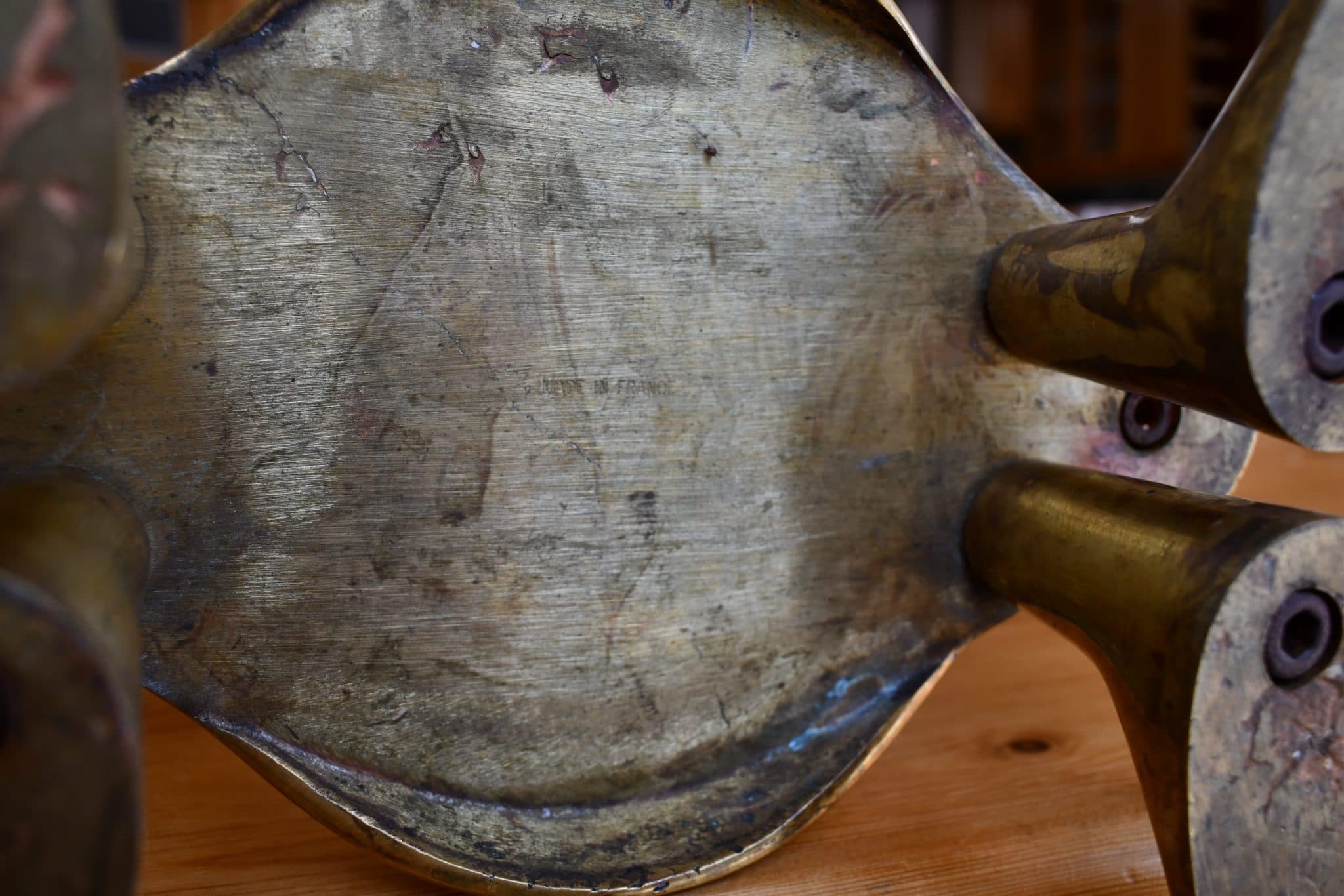

On Amazon, this press is sold by Paderno World Cuisine. Paderno was founded in Italy in 1925 and is now effectively a multinational with thousands of products for hotels, restaurants, and home cooks. The brass duck press is not listed at the Paderno Would Cuisine site but only on their Italian site as a “presse canard” that is “available upon request” but that cannot be directly ordered online. This limited availability and the fact that Paderno offers nothing else even remotely like it leads me to believe that Paderno is a distributor but not the manufacturer (and that stock is limited).
So what French manufacturer could have made such a thing? I spoke with the redoutable Harestew, who found this press for me and has forgotten more than you or I might ever know about French cookware from the 1970s to the present day. She suggested an interesting lead: Magyfleur.
Magyfleur (also rendered Magy Fleur) is a brand of brass confectionary molds designed by chef Yves Thuriès. The molds are formed into a range of leaves, flowers, shells, and stars; you dip them into melted chocolate or sugar, chill them, and then pop off the shaped piece to use for decoration. I don’t believe the company still exists — the trademark was registered in 1978 and expired in 1988 — but you can still buy complete Magyfleur sets on confectionary and specialty pastry websites, and individual pieces sometimes show up on eBay or Etsy (search for both “Magy Fleur” and “Magyfleur”).
Take a look at some of these molds. They remind me strongly of the styling of the duck designs on the press. Could the same manufacturer who made the molds for Magyfleur have also made this brass duck press? What do you think?


I only wish I knew who that manufacturer was. If you happen to have a Magyfleur set complete with its labels and documentation, I’d be grateful if you’d look for any mention of the manufacturer.
Conclusion
So there you have it: the brass duck press. The ruthless pragmatism to wring the blood from a dead duck to create perhaps the most transcendent dish in French cuisine, combined with the whimsical luxury of thirty pounds of solid brass decorated with happy duck feet. This piece brings together everything I love about French cuisine: a deeply serious approach to food, a respect for pageantry, and a sense of humor. (No pun intended.)
Sources
“La Vie parisienne : moeurs élégantes, choses du jour, fantaisies, voyages, théâtres, musique, modes” / par Marcellin (Paris) 1898-01-01. National Library of France, Department Philosophy, History, Human Sciences, FOL-LC13-81 ark: / 12148 / bpt6k1255097w. If you wish to read that extraordinary passage in the original French, here it is, excerpted from the larger essay:
Les aiguillettes s'alignaient dans le plat d'argent. La richesse de leur pourpre épiscopale graduellement s'atténuerait jusqu'au rose délicat et définitif, car elles continuent à cuire. Les cuisses, détachées, disparaissent, vers quels destins? Les parties grasses mises à part ne seront pas introduites dans la presse où déjà craquent la carcasse et les os. Car un excès de graisse alourdirait l'essence savoureuse qui ruisselle et dont le Maître, sur un rythme allègre, presque inspiré, arrose la chair délectable.
Le canard était prêt. Riche essence de vie, concentration de fumets rares et vigoureux, il se fondit en eux dans une extase presque spirituelle, et leurs muqueuses connurent dans leur conscience obscure le frisson d'un absolu entrevu. Plus intelligents, ils se sentirent aussi meilleurs ; et quand, mordorées, les cuisses grillées réapparurent parmi les pâles émeraudes étoilées de grenats d'une salade divinement retournée, ils échangèrent en un regard toute la pitié, toute la tendresse humaines. Le destin leur parut plus beau des brumes pourprées du mystère : ce moment pressait d'une signification l'énigme de leur passage ici-bas, ils excusèrent la douleur inévitable.
[/su_quote
"Cooking with Daniel," by Bill Buford. The New Yorker, 29 July 2013. The final section on the history of canard a la presse seems to be the most accurate of all the histories I've read.
How to Eat a Small Country by Amy Finley is the source for that anecdote about the little girl and the suffocated duck.
